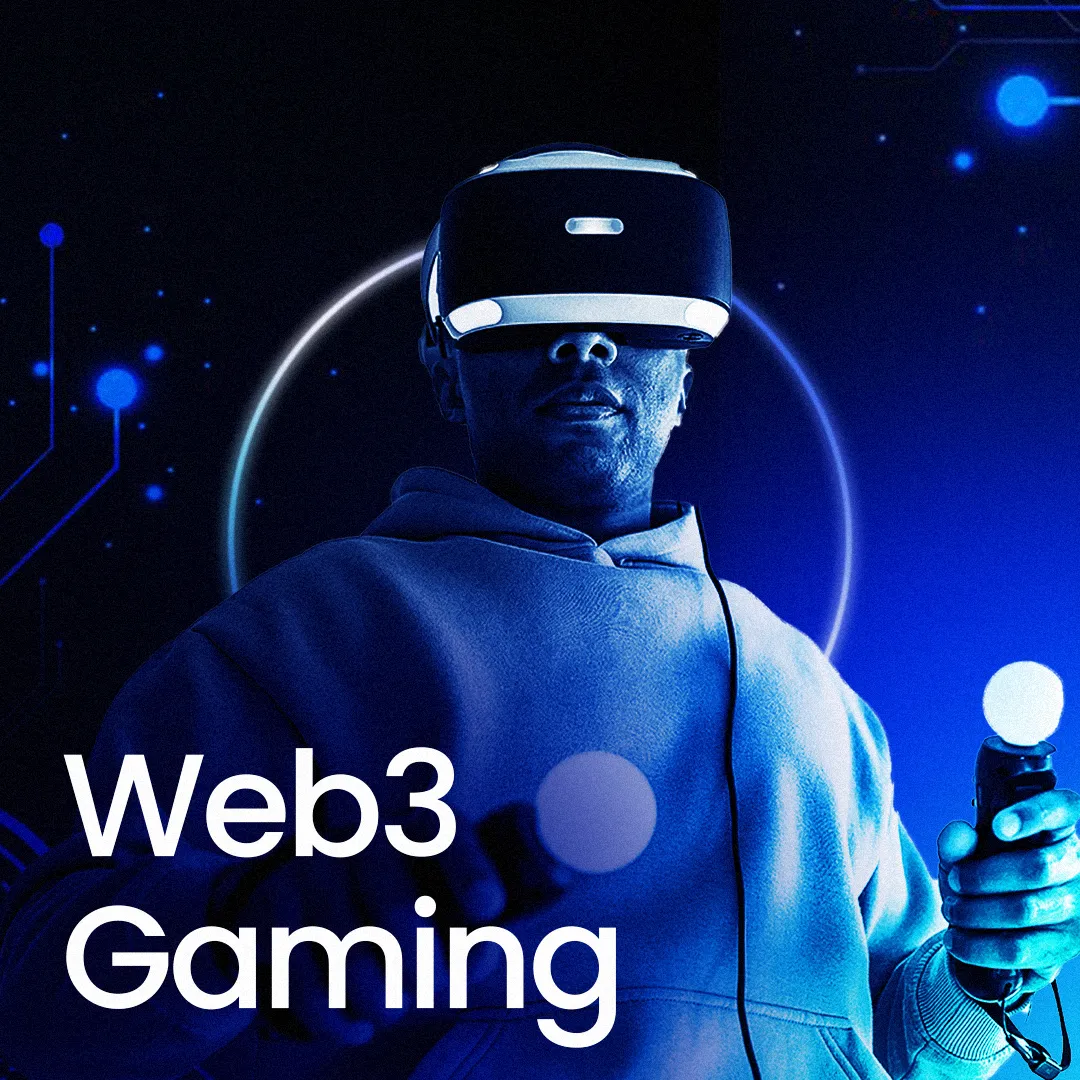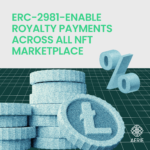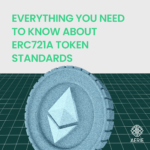Powerful Web3 Gaming: The Future of Gaming, Let’s Play to Earn!

We’re back again, diving into the ever-evolving world of crypto. As we’ve seen, the crypto market has been buzzing with activity, from the potential approval of Bitcoin ETFs to the resolution of the XRP Ripple case. These events have certainly stirred excitement and optimism, but they primarily involve financial transactions and speculative investments. We truly need real-world utility and user engagement to drive mass adoption. That’s where Web3 gaming comes into play. With its immersive experiences and global appeal, gaming could be the golden ticket to bringing the next billion users into the Web3 ecosystem. It’s not just about the potential financial gains; it’s about creating value and usability that resonate with users. So, let’s delve into why gamers could be the catalysts that propel us toward the widespread adoption of Web3 technologies.
How’s Web Gaming in 2021?
1. Overall
Web3 gaming was a hot topic in the 2021 crypto bull market, with the Play-To-Earn (P2E) model taking center stage. Games like Axie Infinity became household names, especially in Southeast Asia, where players could earn a living wage by playing the game. However, as more players joined the fray, the economic model couldn’t sustain everyone’s earnings expectations, leading to a downward spiral.
The P2E model’s decline gave rise to the Move-To-Earn model, with apps like Stepn encouraging players to stay active. While the focus shifted from monetary gain to health benefits, the game eventually faced a similar fate as its P2E predecessors, with a dwindling player base and a 95% drop in the game token’s value.
In 2021, Web3 Gaming also saw the sale of NFTs representing premium game items, characters, and access passes. These NFTs fetched high prices, with some selling for up to 10 ETH when ETH was valued at over $3000. However, the long development time for quality games often exceeded NFT holders’ expectations, leading to a drop in the price of these NFT assets.
In summary, Web3 gaming in 2021 was a roller coaster ride for users, leaving the remaining believers more cautious about new Web3 gaming projects. Despite the ups and downs, the potential for Web3 gaming to bring in the next billion users to the Web3 ecosystem remains.
2. Takeaway
Web3 gaming’s performance in 2021 has demonstrated that the essence of a game is what keeps players engaged. A model solely driven by earnings or incentives doesn’t hold up. The Play-To-Earn or other X-To-Earn models have attracted a multitude of users looking to convert their time into income, but these are not players; they’re grinders. These so-called Web3 games are mostly DeFi platforms with a gamified shell. Users eventually leave when the rewards they earn don’t justify the time they spend. If it’s truly a game, the joy and interest it provides will retain players.
Game companies have recognized that incorporating genuine game elements is the future of Web3 gaming. Web3 technologies like NFTs, blockchain, and metaverses are tools to enhance the features and experiences currently available in games. Ultimately, you need a good, playable game that allows players to experience the benefits of Web3 technologies.
Traditional game companies have an advantage here. They have the experience to create playable and popular games and game IPs that already have a large user base. While existing gamers may initially resist their favorite companies delving into the Web3 realm, I believe they will see the benefits once they experience their familiar IPs in a blockchain environment.
In the following sections, we will discuss some recent developments in the market, the advantages that Web3 can bring to gaming, and case studies on currently active blockchain games.
Recent New Development
1. Oasys
Oasys Blockchain, a Japan-based gaming blockchain, is the brainchild of a founding team hailing from renowned game companies in both the Web2 and Web3 worlds, such as Bandai Namco, double jump.tokyo, SEGA, and YGG. The inception of Oasys Blockchain was a response to the challenges these blockchain game companies encountered during their developmental phase. They concluded that creating a dedicated gaming blockchain was the most viable solution to these issues. Currently, game companies like SEGA, Ubisoft, and Com2uS are integrating their IPs and new game projects into upcoming blockchain games set to launch on the Oasys blockchain network. These include Com2uS’s ‘Summoners War: Chronicles,’ SEGA’s ‘Battle of Three Kingdoms,’ and Ubisoft’s ‘Champions Tactics: Grimoria Chronicles.
Japan’s reputation for producing high-quality games and its dedication to the art of gaming is globally recognized. The recent collaboration of gaming industry titans to create a superior blockchain gaming experience is a testament to this commitment. As a gaming enthusiast, witnessing these industry giants step into the realm of Web3 gaming instills a strong confidence in the future of this sector. Their involvement validates the potential of Web3 gaming and promises a level of quality and innovation that only these seasoned game developers can deliver.
2. LEGO X Epic Games
LEGO and Epic Games have recently announced a partnership that promises to create a metaverse project tailored for children. While the specifics remain under wraps, LEGO and Epic Games have emphasized their commitment to safeguarding children’s well-being, respecting and protecting their privacy, and maintaining control over their digital experiences. This collaboration includes a Fortnite x LEGO project, which aims to merge real-world LEGO creations with Fortnite using Unreal Engine. This new metaverse play experience aims to create an inclusive ecosystem that echoes the next generation of consumers. The focus is on persistent physical and digital play, catering to the growing interest in blending these two realms of experience.
While the project’s specifics are yet to be disclosed, this metaverse initiative by LEGO and Epic Games aims to provide a Roblox-like safe space for young creators. The project’s success isn’t guaranteed, but the combination of Epic Games’ expertise, Fortnite’s popularity, and Lego’s brand power certainly make for an intriguing venture. Despite facing competition from established platforms like Minecraft and Roblox, project details will gradually be unveiled over the next few months, sparking anticipation and speculation.
Benefits of On-Chain Games
1. True Ownership of Assets
One of the most significant distinctions of Web3 gaming from its traditional counterpart is the concept of asset ownership. In the conventional gaming world, the termination of development by the game company or developers can adversely impact players’ assets. Furthermore, these assets often hold no value due to their unlimited editions and lack of liquidity. Take character skins in League of Legends, for instance. These are non-transferable, non-saleable, and even so-called limited editions can be re-released, undermining their exclusivity. The fate of these game assets lies solely in the hands of the game companies and developers, leaving players with no control.
Contrastingly, in the realm of on-chain gaming, game items take the form of NFTs held in players’ wallets, granting them true ownership. This allows for the transfer and sale of these items. Limited edition items minted on-chain display the number of copies in existence in their metadata, providing proof of rarity and limited supply, thereby securing their value. Moreover, as game items conform to the NFT standard, they could potentially be used across multiple games. For instance, weapons or armor items could be utilized in various war-themed games. IP brands might collaborate with game IPs to issue limited game items usable in multiple games, attracting a wider audience as the item is not restricted to a particular game.
From a developer’s perspective, they can earn royalties from the transactions of game items. This ownership model also incentivizes players to continue playing the game. For players, it offers protection for their assets. As game items hold value, developers will create game experiences revolving around these items, potentially enhancing user experience in the long term.
2. Unlocking the Power of Open-Source Gaming
In the conventional gaming landscape, gaming corporations and developers firmly hold the reins of game development. They possess the game’s source code, dictating its evolution, lifespan, and the experiences it offers to players. However, Web3 gaming has shown a new era of player experience. Being entirely on-chain, Web3 games continue to thrive even if the original developers step away, thanks to the transparency and accessibility of the on-chain code. This not only safeguards the value of in-game items but also ensures the game’s immortality on the blockchain.
This new paradigm addresses the traditional gaming pitfall where players’ assets and achievements are at the mercy of the gaming companies. In the past, players risked losing their hard-earned progress if they displeased the gaming companies, which could freeze or ban their accounts. But with the advent of NFTs and digital wallets, players now wield complete control over their assets, free from the gaming companies’ influence.
The original developers lay down the game’s core logic, such as physical parameters, land materials, art style, and storyline, in the form of smart contracts on the blockchain. This foundation allows new developers to build upon it, creating fresh environments, quests, and adventures, enhancing the players’ experience. They can create these new experiences for personal use, sell them, or grant access to others. This is reminiscent of the creative freedom in games like Minecraft and Roblox but on a more complex and universal scale.
Imagine an MMORPG where the storyline and quests aren’t predetermined, but evolve based on players’ choices. A city in the game could be wiped off the map if players fail to defend it in a war, creating a unique, player-driven narrative that is permanently etched on the blockchain.
In traditional gaming, the game publisher can tweak the game’s settings and core logic at will. However, in on-chain games, once the initial smart contract is published, it sets the stage for a world that can be built upon but not fundamentally altered, ensuring fairness for all. No one can manipulate the rules to favor or harm any party.
One of the key appeals of gaming is the ability to immerse oneself in a fantasy world. However, the scope of this world is often constrained by the resources of the gaming company. Open-source development breaks these shackles, unlocking limitless potential in these fantasy worlds. For instance, if a game like League of Legends allowed players to create maps or rules based on basic parameters, it could lead to many innovative game mechanics and matches.
With all core logic, data status, calculations, and execution stored on-chain, the barriers for potential developers are significantly lowered. The market could also see a surge in self-development kits (SDKs) catering to specific requests for different game types. The game world will evolve from being just a playground to a canvas for creativity and innovation.
Exploring the BAYC Game Universe: A Case Study
Yuga Labs is a beacon in the NFT realm, renowned for its groundbreaking PFP NFT collections and communities. Their delivery and innovation track record has positioned them as market leaders, setting trends and charting the course for the NFT space. Let’s delve into their foray into Web3 gaming.
1. Venturing into the Otherside: A Metaverse Experience
The Otherside represents Yuga Labs’ vision of a metaverse. Within this expansive digital realm, NFT holders from Yuga Labs and select partner projects can step into the Otherside, embodying their NFTs as in-game avatars. The Otherdeed NFTs serve as parcels of land within this metaverse. Each piece of land boasts unique environments and features, from rare resources to mighty artifacts. Some even house Koda, a novel NFT character. Currently, these land NFTs act as gateways to the Otherside. While the full potential of resources, artifacts, and Koda remains under wraps, the intricate setup already hints at a rich gaming experience on the horizon.
Their website showcases “The Voyager’s Journey,” a roadmap of 11 evolving phases. With two trial game journeys already unveiled, NFT holders have been offered a tantalizing glimpse of the gaming future that awaits. As the roadmap unfolds, NFT owners will have the tools to shape and customize their lands.
2. The Evolution of Dynamic NFTs
Yuga Labs has been pioneering in crafting dynamic gameplay around NFTs. In January, they introduced Dookey Dash, an exhilarating endless runner game. Players, equipped with the Sewer Pass, embark on a quest to retrieve a key from the mischievous Jimmy the Monkey. With its unique blend of skill and strategy, this game attracted a diverse player base, including e-sports professionals. E-sports star Kyle “Mongraal” Jackson even auctioned off his winning Dookey Dash key NFT for a staggering 1,000 ETH!
March saw the HV-MTL (Heavy Metal) NFT collection unveiled through a “summoning” process. Owners of the Sewer Pass NFTs had the option to transform them into “Power Source” NFTs, which represented the HV-MTL NFTs. The game’s leaderboard from Dookey Dash determined the eight distinct types of HV-MTL.
Fast forward to June, and the HV-MTL NFTs have evolved into robotic avatars, accompanied by the release of the HV-MTL Forge game. This game, rich in digital pet nurturing and world-building elements, promises to evolve into a dungeon adventure experience. A strong emphasis on social interactions encourages players to form alliances in preparation for future quests.
The journey of the HV-MTL NFT, originating from Dookey Dash, is a testament to Yuga Labs’ innovative spirit. As we anticipate its integration into the Otherside, questions arise. Will the HV-MTL serve as resource scouts, aiding players in their Otherdeed land explorations? And what role will BAKC, the canine NFT, play in this expansive metaverse?
To date, Yuga Labs, or the broader BAYC universe, has garnered immense anticipation, especially from traditional PFP NFT enthusiasts. They’ve set themselves apart by not just conceptualizing but actualizing a playable metaverse. Gameplay videos on YouTube showcase a seamless gaming experience, even with thousands of players congregating in a single area. This journey underscores the power of NFTs in enhancing gaming experiences and asset ownership. Whether it’s the Sewer Pass or the Otherdeed NFT, players have the autonomy to trade or share their gaming experiences. It’s a testament to the evolving gaming landscape, where developers must continually innovate to offer unparalleled experiences to NFT holders. Yuga Labs’ journey from Dookey Dash to HV-MTL NFT epitomizes the potential of Web3 gaming, signaling an exhilarating future for the industry.
Final Thoughts
Two years on from 2021, the gaming landscape is evolving at a rapid pace. Many once “promising” game ventures are now delivering on their pledges to backers, marking significant milestones. Simultaneously, seasoned game developers are venturing into the Web3 domain, eager to harness its transformative potential for the gaming world. A recent entrant, “SUI 8192,” offers a fascinating case study. This entirely on-chain game, inspired by the beloved 2048, is hosted on the Sui blockchain. Its launch sent blockchain activity soaring to unprecedented heights, underscoring the critical role of “playability.”
Yet, it also prompts introspection: Why bring a game like 2048 onto the blockchain? Beyond the allure of minting high scores as NFTs and the inherent social prestige, what’s the rationale for such a transition? While “SUI 8192” is just one instance, it indicates a broader trend. As more games make their blockchain debut, we’ll be better positioned to determine whether Web3 gaming truly represents the future or if it’s just another fleeting trend. The answers await, and the journey promises to be as thrilling as the games themselves.









